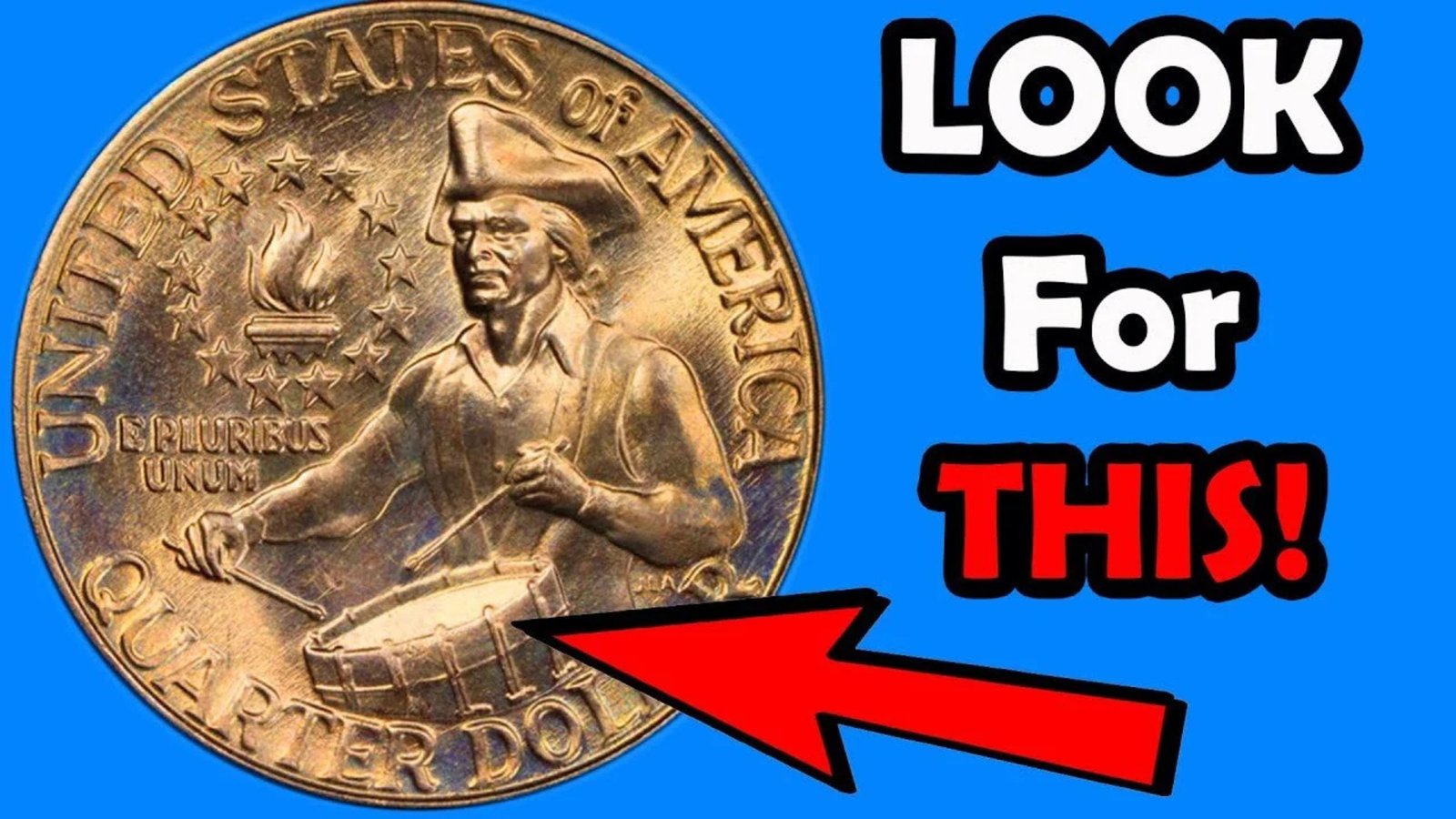Rare Bicentennial Quarter : Imagine paying for a coffee with a regular-looking quarter, only to later discover that the coin you handed over is worth $1 million. That’s the buzz around a rare Bicentennial Quarter that has stunned coin collectors and everyday folks alike. What makes this coin so special? The mystery lies in its history, condition, and a few lucky minting errors that turn an everyday coin into a once-in-a-lifetime find.
What Is the Bicentennial Quarter?
The Bicentennial Quarter was minted in 1975 and 1976 to celebrate America’s 200th anniversary of independence. It features a special design: a colonial drummer on the reverse (back) and the unique dual date 1776–1976 on the front. While millions of these quarters were made, one or two extremely rare versions have stunned the collecting world with values reaching up to $1 million.
Why Is One Worth $1 Million?
This staggering value isn’t for just any Bicentennial Quarter—it’s tied to a super rare version likely created by mistake or as part of a test run. Some were:
- Struck on 90% silver planchets rather than the usual copper-nickel mix.
- Created with proof-like details, originally intended for collectors only.
- Minted with errors, like off-center strikes or doubled images, that make them unique.
One particular coin with these traits reportedly changed hands for nearly $1 million due to its flawless condition and unmatched rarity.
Could It Still Be in Circulation?
Yes — and that’s what makes this story so thrilling. Unlike museum pieces or coins locked in a safe, this rare Bicentennial Quarter may still be out there in someone’s spare change. It could be in a coin jar, inside an old wallet, or even in the change you get from a vending machine. The possibility of finding a million-dollar coin in everyday life keeps collectors and curious minds searching.
What Should You Look For?
If you want to check your quarters, here are a few things to notice:
- The Date: Look for the 1776–1976 dual date.
- Design: The back should show a colonial drummer with a torch and thirteen stars.
- Luster and Detail: Unusual shine, mirror-like finish, or crisp lines may indicate a special strike.
- Weight: Silver quarters weigh more than copper-nickel ones.
- Errors: Anything strange—like missing letters, odd shapes, or off-center images—could raise the value dramatically.
Where Can You Confirm If You Have One?
If you suspect your coin is valuable, don’t rush to sell it. First:
- Use a magnifying glass to check for fine details.
- Compare it with known rare examples online.
- Get the coin graded by a professional service like PCGS or NGC.
- Visit a local coin dealer for advice or a second opinion.
Having an expert assess your coin can make all the difference in how much you can sell it for.
Most People Ask: FAQs
Q1: How can I tell if my Bicentennial Quarter is the rare one?
Answer: Look for coins with a 1776–1976 date, struck on silver planchets, with unusual luster or minting errors. The rarest ones usually have a mirror-like finish or off-metal striking.
Q2: Are all Bicentennial Quarters valuable?
Answer: No. Most are common and worth face value. Only a very small number with rare traits or errors are worth thousands—or possibly up to $1 million.
Q3: How much does a regular 1776–1976 quarter weigh?
Answer: A typical copper-nickel Bicentennial Quarter weighs about 5.67 grams. If it weighs closer to 6.25 grams, it could be a silver version.
Q4: Where can I sell a rare coin?
Answer: You can sell through online auctions (e.g., eBay), at coin shows, or via certified coin dealers. If you have a truly rare example, major auction houses like Heritage Auctions might be interested.
Final Thought: Don’t Underestimate Your Change
The rare Bicentennial Quarter valued at $1 million isn’t just a collector’s fantasy—it’s a real possibility, and it could be in your pocket right now. With a little knowledge and curiosity, you might just stumble across a coin that turns your spare change into a small fortune. So the next time you hear that clink of coins, take a closer look. History—and maybe a million bucks—could be staring back at you.





